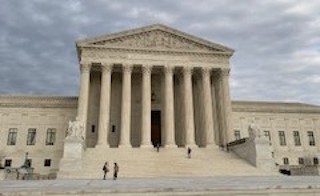In 2020, the U.S. Supreme Court held, in Ramos v. Louisiana (2020) 590 U.S. _____, that jury verdicts in criminal cases must be unanimous under the Sixth Amendment to the U.S. Constitution.
Why This Article Matters: The right to a unanimous jury verdict in a criminal trial, established in 2020, is not retroactive to prior verdicts that may have been reached without unanimity, i.e., in Louisiana as this case explains.
While California already had such a requirement, it is significant (some might say shocking, or depressing) how the U.S. Supreme Court ruled in April 2021 in the case of Thedrick Edwards v. Darrel Vonnoy, Warden (2021) 593 U.S. ____, from Louisiana, where such a requirement did not exist in 2007. In this case, Mr. Edwards sought retroactive application of Ramos to his case to set aside his fourteen-year conviction.
Mr. Edwards is African American. He was convicted of rape, armed robbery and kidnapping in Louisiana in 2007. The verdict was not unanimous. One juror, an African American, voted that Edwards was not guilty, but since a unanimous verdict was not required, Edwards was convicted and was sentenced to prison
Once Ramos, supra, was decided, Edwards filed a petition for writ of habeas corpus that went through Louisiana state courts, then the Fifth Appellate District Court of Appeal, where it was denied, and then to the U.S. Supreme Court on a petition for a writ of certiorari.
The key to having Ramos apply retroactively to vacate his conviction was a finding that the requirement of having a unanimous verdict was a “watershed” ruling. Teague v. Lane (1989) 489 U.S. 288, 109 S. Ct. 1060, 103 L. Ed. 2d 334. Under the “Teague test,” in a habeas proceeding, only a limited set of important substantive and procedural rules will be enforced retroactively. Indeed, most do not have retroactive application. However, certain decisions involve “watershed” rights that are so significant that they require retroactive application, i.e., the right to an attorney in a criminal proceeding. Gideon v. Wainwright (1963) 372 U.S. 335.
Writing for the majority, Justice Brett Kavanaugh, joined by Justices Thomas, Alito, Gorsuch and Barrett, the Supreme Court held that Ramos did not create a “watershed” right. In other words, the Sixth Amendment right to a unanimous jury verdict in a criminal case was not so significant to require retroactive application.
 U.S. Supreme Court
U.S. Supreme Court
The key to the majority’s holding seemed to be that under Apodaca v. Oregon (1972) 406 U.S. 404, which Ramos overruled. Prior to Ramos, Apodaca had held that there was no constitutional right to a unanimous jury verdict in a felony criminal trial. However, all but two states, Oregon and Louisiana (and Puerto Rico), had made a unanimous jury verdict required in a criminal jury trial. The unanimous verdict requirement was seen by many as a way to overcome a lone (“hold out”), often African American juror, who voted not guilty on a criminal trial of an African American, like Edwards in Louisiana. However, the right was already provided for in 48 out of the 50 states, so the majority apparently did not consider Ramos as creating much of a new right as much as requiring two out of 50 states to change their laws.
So in a way, the ruling in Edwards, finding the right to a unanimous jury verdict was not a watershed ruling, perpetuates the racial criminal justice system that Louisiana preserved, at least under Ramos was decided, ending Louisiana’s system of allowing non-unanimous criminal jury verdicts It may also be that the U.S. Supreme Court found the facts conclusive and the verdict in Edwards proper and did not want to vacate his conviction out of concern that confidence in our criminal justice system would be undermined.
The dissent in Edwards was written by Justices Elena Kagan and jointed by Justices Breyer and Sotomayor. It argued that the right to a unanimous jury verdict in a criminal trial was a watershed right and that by finding it is not, the majority has essentially overruled Teague or at least ignored it completely, eviscerating it.
We at Greg Hill & Associates agree more with the dissent than the majority in this case. The right to a unanimous jury verdict is consistent with the beyond a reasonable doubt legal standard our criminal justice system follows. The Ramos holding thus really is a watershed ruling and it should be applied retroactively to Edwards’ conviction.
The citation for the U.S. Supreme Court ruling discussed above is Thedrick Edwards v. Darrel Vonnoy, Warden (2021) 593 U.S. ___.
For more information about jury verdicts, please click on the following articles:
 U.S. Supreme Court
U.S. Supreme Court